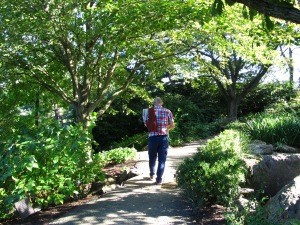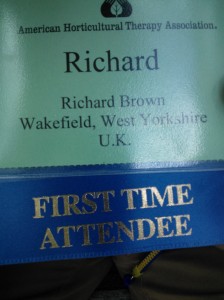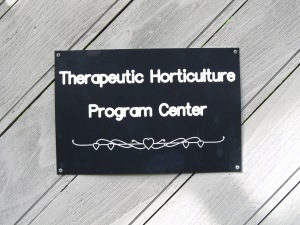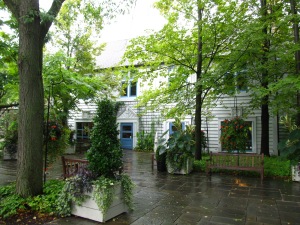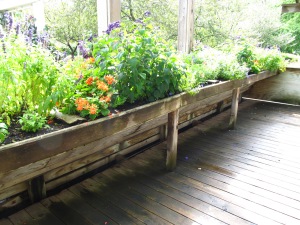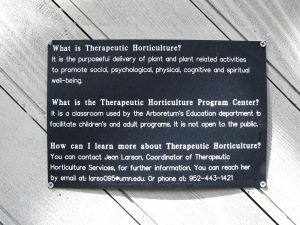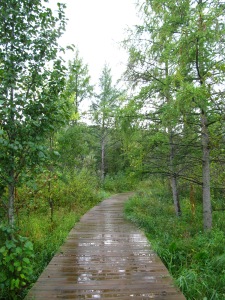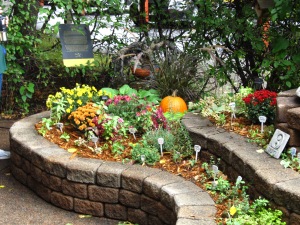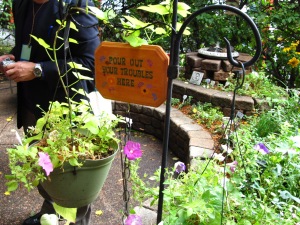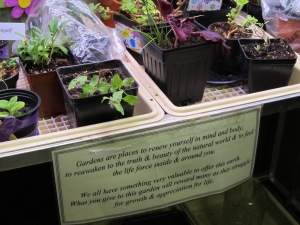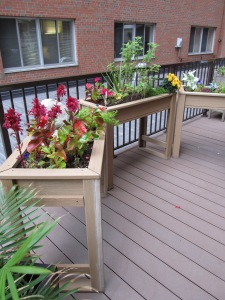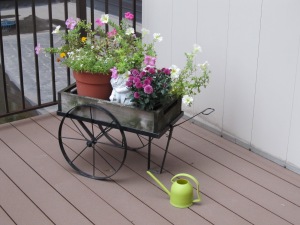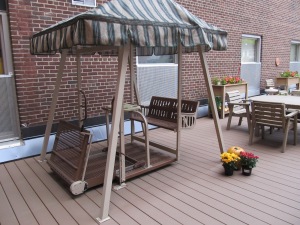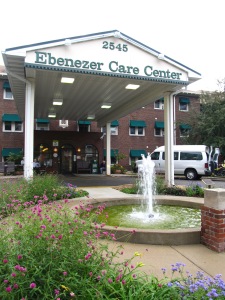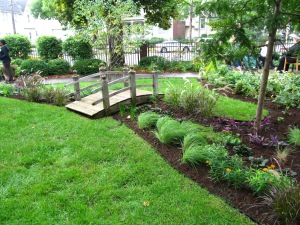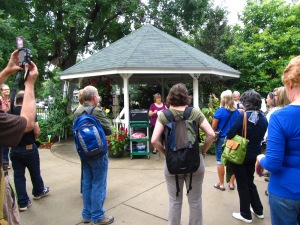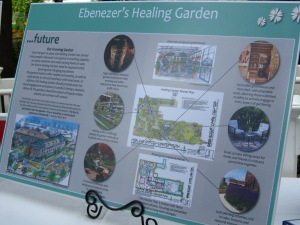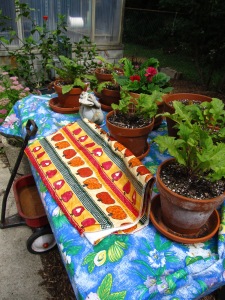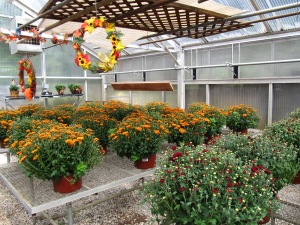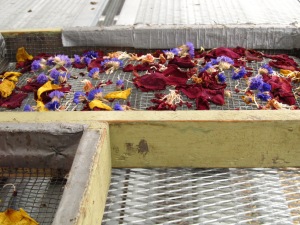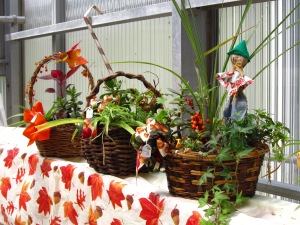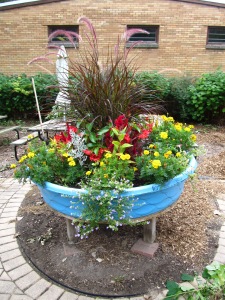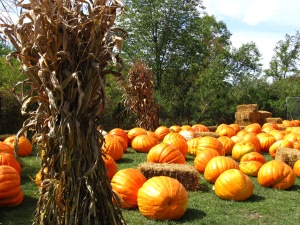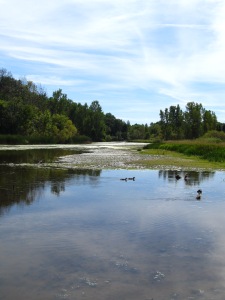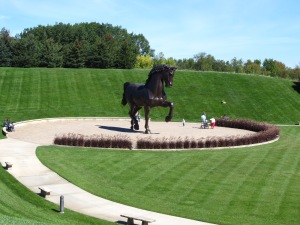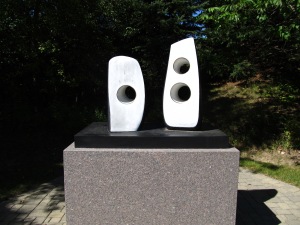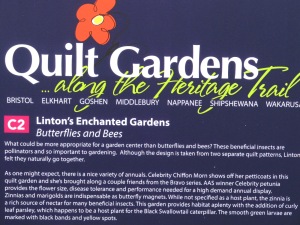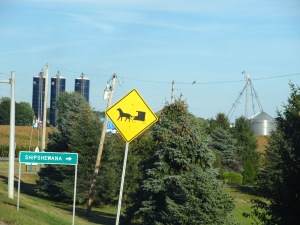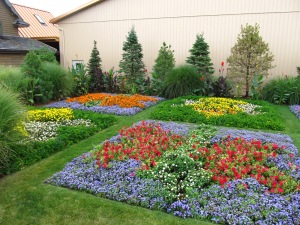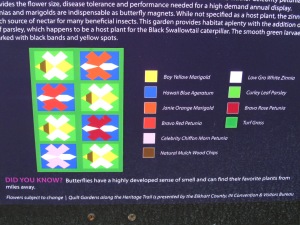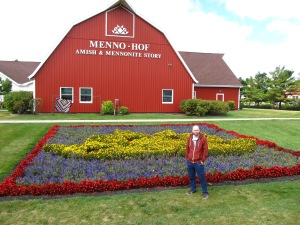
First of all, let me apologise for the delay in writing this one up. Since returning home and to work and to renovating our house (with some fruit wine making thrown in!) it had dropped off the end of that list somewhat.
Chicago Botanic Garden is world renowned as a garden alone. This can also be said for its accessible garden and horticultural therapy service.
Opened in 1972 (relatively young for a botanical garden), the “living plant museum” is situated north of Chicago in Glencoe and covers 385 acres of previous wetland which was excavated to create 9 islands housing 26 display gardens (including the world’s first and largest enabling garden) that are surrounded by 4 wildlife areas.
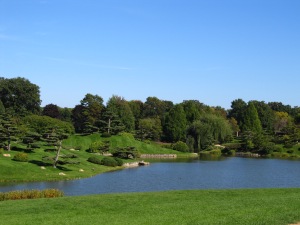
The horticultural therapy service is made up by three members of staff; Barb Kreski (Director of Horticultural Therapy Services), Alicia Green (Coordinator, Buehler Enabling Garden) and Clare Johnson (Off-site Coordinator and Design Consultant). They offer therapy programs in the Buehler Enabling Garden, off-site programming, accessible and healing garden design consultation and run horticultural therapy and healthcare garden design teaching courses.
I was fortunate enough to be given the opportunity by Barb Kreski to see the original enabling garden that Gene Rothert created. Since the creation of the BuehlerGarden it has now fallen into disrepair and is soon to be built on, but it was an absolute privilege to see where the ideas that have later become the world’s most famous accessible garden were sown. The garden was made at low cost to demonstrate how accessibility could be achieved by everyone. The raised beds being made from cinder blocks (breeze blocks to us in the UK) and wood. Planters made from chimney pots and hard standing suitable for wheelchair access throughout.
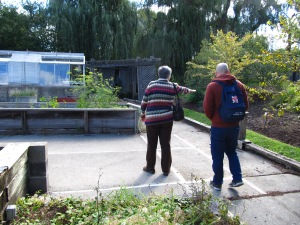
Old Enabling Garden
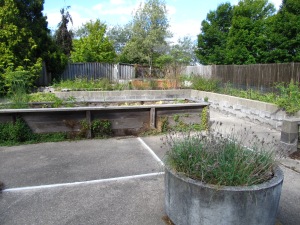
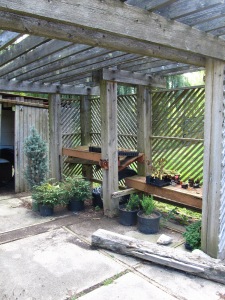
The Buehler Enabling Garden was built in and is the pinnacle of accessible gardens. All of the ideas and concepts that Gene Rothert started and worked on in the old garden were incorporated in the Buehler.
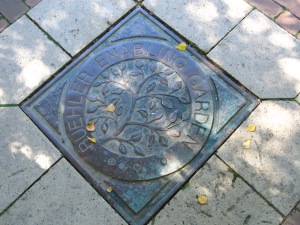
I hope to cover all the ideas in my final report, which you will be able to download for free, but I will highlight some here. The hanging baskets are on a pulley system so they can be higher and lowered quickly and easily so that people can work on and appreciate them at any level.
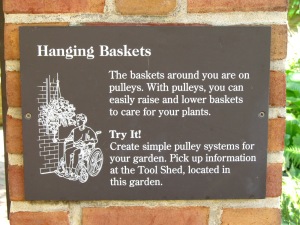
There is a grid garden for people with sight difficulties. Each plant is planted in the middle of the square of the grid, with the plant being chosen for their sensory benefits. A person can then count out which grid they are working in, know the plant they are growing in the middle and everything around it can be weeded out.
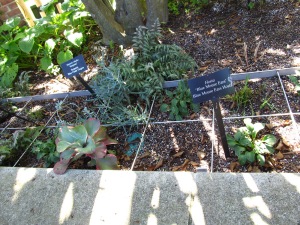
‘Pan beds’ are designed to slope slightly away from the person who is working on them so that they do not get wet, particularly if there legs are underneath the bed.
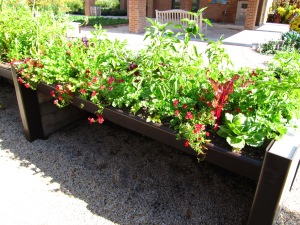
The garden also has a raised lawn area. The idea behind this is for people who are in wheelchairs it can often be difficult to transfer in and out of the chair to lay on the grass. With the grass being brought up to seating level, transferring is much easier and, for some, can be done without the help of anyone else.
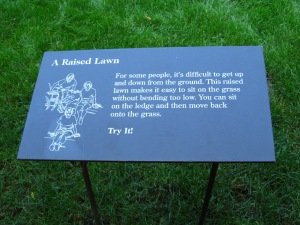
A demonstration potting shed displays adapted tools for people to try and feel the weight of before committing to buy them.
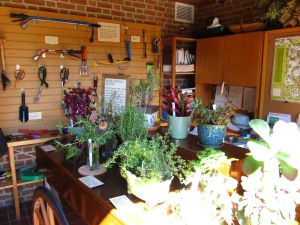
Alicia’s job is to maintain the garden to the Botanical Garden standards, including following themes on planting whilst balancing this with running therapy programs in the garden and coordinating volunteers.
Whilst I was in the Buehler Garden the overall feeling was that it was just another garden, along with the other 25. Only when you looked closely and read the signage was it evident that you were in an accessible garden. Surely that is what we are all aiming for, people being able to just garden, in a garden that everyone can access, no fuss.
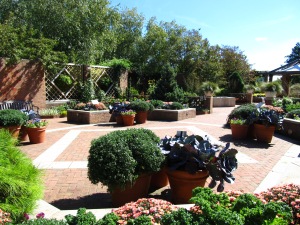
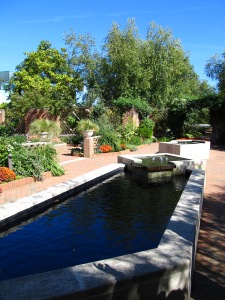
As mentioned above, the Horticultural Therapy Team also run programs off-site and I accompanied Barb Kreski on a visit to a local school for children with autism where Barb runs sessions on linking caring for plants with self-care, discussing what plants need to stay alive and pointing out that each one might need different amounts of things (e.g. sunlight and water). The children were clearly engaged, offering ideas and suggestions throughout.
The team, through Clare Johnson, offer advice on creating accessible and healing gardens. She also designs programs for services which she helps to set up and run before leaving the staff to continue to run the programs.

